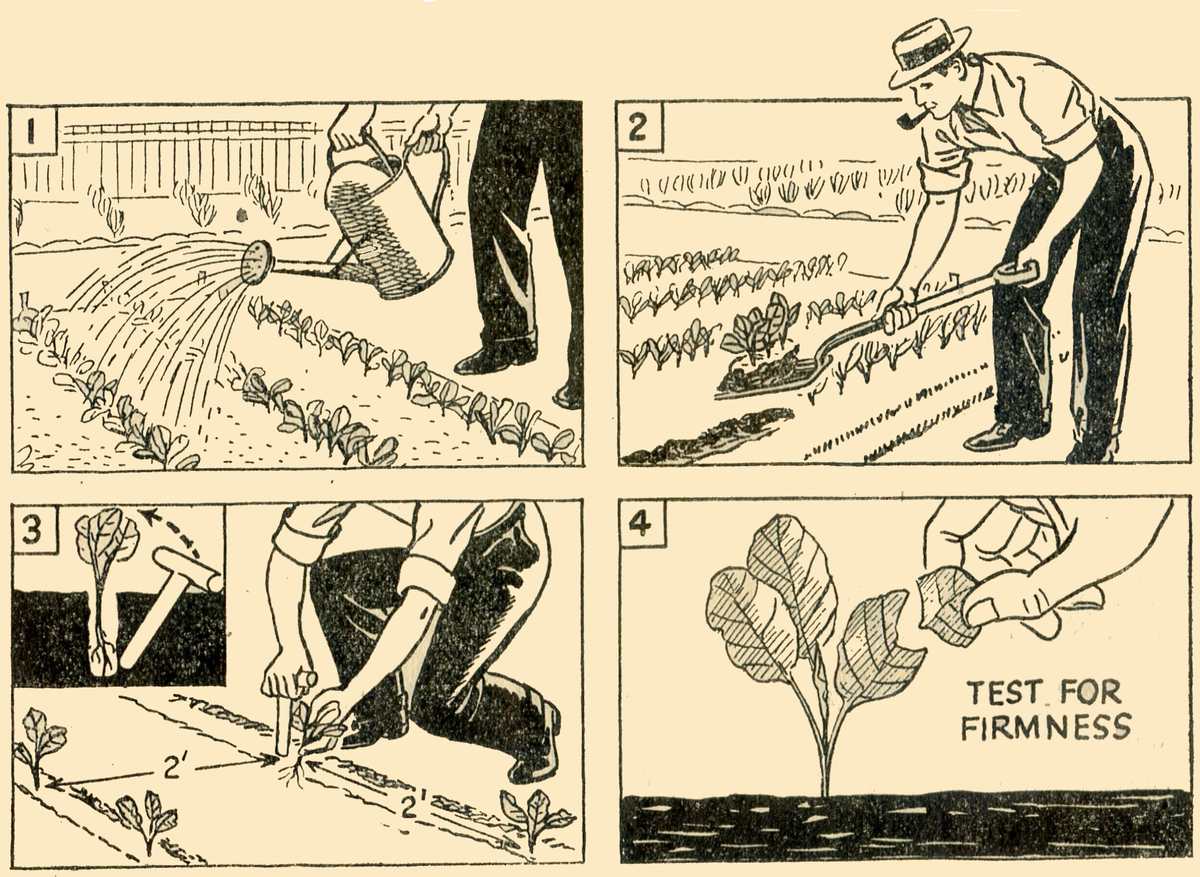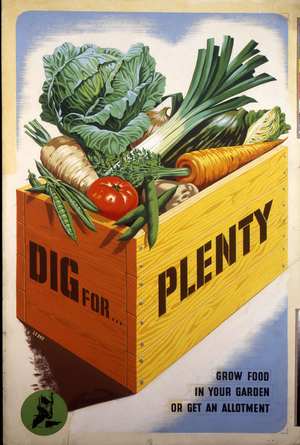Those GREEN CROPS for next winter
During the summer, when the weather does not always provide those rainy periods at the time we need them most, we gardeners have to be swift to act and seize the right moment to do our various jobs of sowing and planting.
When a fall of rain has brought the surface soil into just the right state for planting, all other garden work should be set aside to make the most of an opportunity that may not come again until the seedling plants have passed the best stage for planting out.
If nature fails to oblige, then we have to choose between waiting for rain and risking the plants remaining in the seed-beds, or watering the ground thoroughly before planting. With kale and sprouting broccoli, two very useful vegetables for after Christmas, this is a decision we often have to make.
The middle of the month is the time to plant them, in rows 2 ft. apart each way; if there is sufficient room, allow 2 ft. 6 in. each way. The Ministry’s plan for a 300 sq. yd. plot recommends two rows of each, which should provide a good supply of greenstuff lasting well into next spring.
These brassicas should be planted in a shallow drill about 2 in. deep and 3 or 4 in. wide. This not only helps to direct moisture towards the roots of the plants, but it makes it easier to draw soil up to the stems, thus helping to keep the plants from blowing over on gusty days later in the season.
The Ministry’s plan also provides for three rows of winter cabbages, and mid-July is the time for planting them out (2 ft. apart each way) in the shallow drills already described.
If you have grown your own plants in a seedbed, lift them carefully with a fork, aiming at getting them out with as much soil as possible adhering to the roots. Should the weather be dry, give the seedbed a good soaking the night before you lift. This applies to all your brassicas.
The sketches on planting cabbage may help you. If you have to plant in dry ground, water each hole before planting, cover in with soil and again water. Half-a-pint of water should be sufficient for each plant.
Always make sure that your cabbage plants are firmly planted by testing one or two here and there as you go along the rows. If you pull the plant by the edge of a leaf, the part between your finger and thumb should tear away.
But if you pull the plant up, you are not planting firmly enough. Early-sown savoys will be reaching the stage when they should be transplanted. But it is not wise to have this crop in bearing too early in the winter, and if the larger plants are put out 2 ft. apart this month, the smaller seedlings could be transplanted 6 in. apart in an odd corner and allowed to grow on for a time before you finally put them in their permanent quarters, perhaps as late as the end of July or early in August.

- Keep Working, Control Caterpillars
- Cabbage Root Fly, Watering Advice
- Planting out Leeks & Feeding Onions
- Runner Beans, Harvesting Shallots, Spinach Beet & Turnips
- Cabbage, Compost, Carrots & Successional Sowing
- Green Crops for Winter, Brassicas
- Seed Saving – What You Can Save
- What & How of Seed Saving


